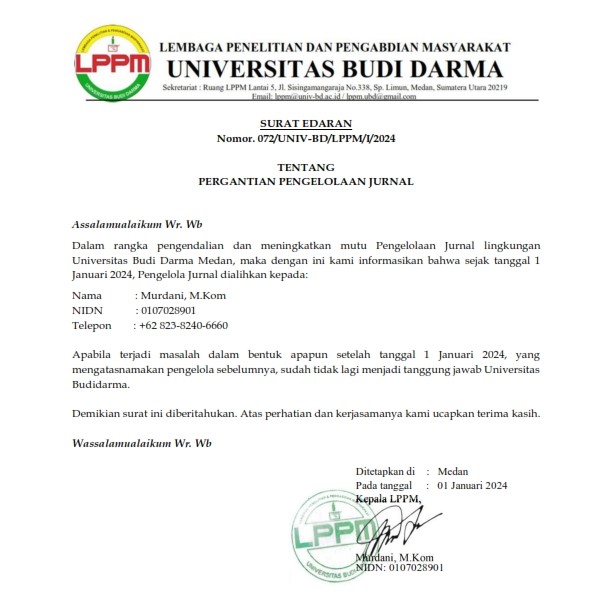Perbandingan Kinerja Deep Learning Dalam Pendeteksian Kerusakan Biji Kopi
DOI:
https://doi.org/10.30865/jurikom.v9i6.5151Keywords:
Coffee Bean Detection, Deep Learning, Convolutional Neural Network, ResNet-34, VGG-16Abstract
Coffee is one of the most consumed beverages today. The coffee beans are first sorted by the farmers. This is because there are many types of coffee beans that differ in terms of shape and texture. After sorting, farmers must detect whether the coffee beans are damaged or not. The process is still done manually by coffee farmers so it takes a long time and results in errors due to lack of knowledge about coffee. In addition, efforts are also being made to improve the quality of the coffee beans which will affect the selling value of the coffee beans. Based on these problems, this study aims to design a deep learning model to detect coffee bean damage and evaluate the architecture of ResNet-34 and VGG-16. The classification model built using a Convolutional Neural Network (CNN) is expected to be able to know a better architecture and be able to detect damaged or normal coffee beans accurately and precisely
References
Y. Prastyaningsih, A. Noor, and A. Supriyanto, “Identifikasi Jenis Biji Kopi Menggunakan Ekstraksi Fitur Tekstur Berbasis Content Based Image Retrieval,†Sci. (Computer Sci. Informatics Journal), vol. 3, no. 2, pp. 105–116, 2020.
Badan Pusat Statistik, Statistik Kopi Indonesia, I. Jl. Dr Sutomo No 6-8 Jakarta 10710: Badan Pusat Statistik 2019. (accessed May. 01, 2022).
C. Mutia Annur, “Konsumsi Kopi Domestik di Indonesia Terus Meningkat selama 5 Tahun Terakhir,†databoks, 2020. https://databoks.katadata.co.id/datapublish/2022/03/09/produksi-kopiindonesia-naik-jadi-77460-ribu-ton-pada-2021 (accessed May. 02, 2022).
Standar Nasional Indonesia Biji Kopi. Badan Standardisasi Nasional. Indonesia. [Online]. Available: https://www.cctcid.com/wpcontent/uploads/2018/08/SNI_2907-2008_Biji_Kopi-1.pdf
H. Syahputra, F. Arnia dan K. Munadi. Karakteristik Kecacatan Buah Kopi Berdasarkan Warna Kulit Kopi Menggunakan Histogram dan Momen Warna. Jurnal Nasional Teknik Elektro, Vol. 8, No. 1, Maret 2019 pISSN: 2302-2949, e-ISSN:2407 –7267.
“Mengidentifikasi Defect Pada Kopi https://coffeeland.co.id/mengidentifikasi-defect-pada kopi/ (accessed September. 4, 2022)
Febriana, A., Muchtar, K., Dawood, R.,Lin,CY.,(2022, June). "USK-COFFEE Dataset: A Multi-class Green Arabica Coffee Bean Dataset for Deep Learning." In 2022 IEEE International Conference on Cybernetics and Computational Intelligence (CyberneticsCom). IEEE.
Islamy, F., Muchtar, K., Arnia, F., Dawood R., Febriana, A.,(2022, September). “Performance Evaluation of Coffee Bean Binary Classification through Deep Learning Techniquesâ€. ICEED 2022. (Submitted).
I. H. Sarker, “Deep Learning: A Comprehensive Overview on Techniques, Taxonomy, Applications and Research Directions,†SN Comput. Sci., vol. 2, no. 6, pp. 1–20, 2021, doi: 10.1007/s42979-021-00815-1.
T. Nurhikmat, “Implementasi Deep learning untuk Image Classification Menggunakan Algoritma Convolutional Neural Network (CNN) pada Citra Wayang Golek,†Universitas Islam Indonesia, 2018.
A. Oliver, "Kenali Deep Learning, Teknologi yang Membawa Sukses bagi Netflix dan YouTube," glints, 13 Juni 2021. [Online]. Available : https://glints.com/id/lowongan/deep-learning-adalah/. [Diakses Pada 17 September 2022].
Z. M. Fadlullah et al., “State-of-the-Art Deep Learning: Evolving Machine Intelligence Toward Tomorrow’s Intelligent Network Traffic Control Systems,†IEEE Commun. Surv. Tutorials, vol. 19, no. 4, pp. 2432–2455, Oct. 2017, doi: 10.1109/COMST.2017.2707140.
F. Sultana, A. Sufian, and P. Dutta, “A review of object detection models based on convolutional neural network,†Adv. Intell. Syst. Comput., vol. 1157, pp. 1–16, 2020, doi: 10.1007/978-981-15-4288-6_1.
K. P. Danukusumo, “Implementasi Deep Learning Menggunakan Convolutional Neural Network untuk Klasifikasi Citra Candi Berbasis GUI,†Skripsi, Universitas Atma Jaya Yogyakarta, Yogyakarta, Indonesia, 2017.
A. Ghosh, A. Sufian, F. Sultana, A. Chakrabarti, and D. De, Fundamental concepts of convolutional neural network, vol. 172, January. 2019.
S. Tammina, “Transfer learning using VGG-16 with Deep Convolutional Neural Network for Classifying Images,†Int. J. Sci. Res. Publ., vol. 9, no. 10, p. p9420, 2019, doi: 10.29322/ijsrp.9.10.2019.p9420.
Y. Guo, Y. Liu, A. Oerlemans, S. Lao, S. Wu, and M. S. Lew, “Deep learning for visual understanding: A review,†Neurocomputing, vol. 187, pp. 27–48, 2016, doi: 10.1016/j.neucom.2015.09.116.
A. Hibatullah and I. Maliki, “Penerapan Metode Convolutional Neural Network Pada Pengenalan Pola Citra Sandi Rumput,†2019.
Abdul, “Convolutional Neural Network Assignment Help†[Online]. Available : https://www.thestatisticsassignmenthelp.com/convolutional-neural-networks-assignment-help.
Rian, “MODUL CNN WITH PYTORCH 0.4.†[Online] Available : https://machinelearning.mipa.ugm.ac.id/wpcontent/uploads/sites/374/2018/07/Pytorch-CNN-1.pdf.
R. Fachrizal, "Mengenal Beberapa Perpustakaan Machine Learning Berbasis Python," INFOKOMPUTER, 31 Mei 2019. [Online]. Available : https://infokomputer.grid.id/read/121744301/mengenal-beberapa perpustakaan-machine-learning-berbasis-python?page=all. [Diakses Pada 10 Oktober 2022].
K. He, X. Zhang, S. Ren, and J. Sun. Deep residual learning for image recognition. arXiv:1512.03385 [cs], Dec 2015. arXiv: 1512.03385
O. G. Yalcin, “4 Pre-Trained CNN Models to Use for Computer Vision with Transfer Learning,†Towards Data Science, 23 September 2020. [Online]. Tersedia: https://towardsdatascience.com/4-pre-trained-cnn-models-to-use-for-computer-vision-with-transfer-learning-885cb1b2dfc. [Diakses pada 17 September 2022]
M. A. Rayan, A. Rahim, M. A. Rahman, M. A. Marjan, and U. A. M. E. Ali, “Fish freshness classification using combined deep learning model,†2021 Int. Conf. Autom. Control Mechatronics Ind. 4.0, ACMI 2021, no. July, 2021, doi: 10.1109/ACMI53878.2021.9528138
S. Islam, S. I. A. Khan, M. Minhazul Abedin, K. M. Habibullah, and A. K. Das, “Bird species classification from an image using VGG-16 network,†ACM Int. Conf. Proceeding Ser., pp. 38–42, 2019, doi: 10.1145/3348445.3348480.
D. Hong et al., “Genetic syndromes screening by facial recognition technology: VGG-16 screening model construction and evaluation,†Orphanet J. Rare Dis., vol. 16, no. 1, pp. 1–8, 2021, doi: 10.1186/s13023- 021-01979-y.
Q. Guan et al., “Deep convolutional neural network VGG-16 model differential diagnosing of papillary thyroid carcinomas in cytological images: A pilot study,†J. Cancer, vol. 10, no. 20, pp. 4876–4882, 2019, doi: 10.7150/jca.28769.








